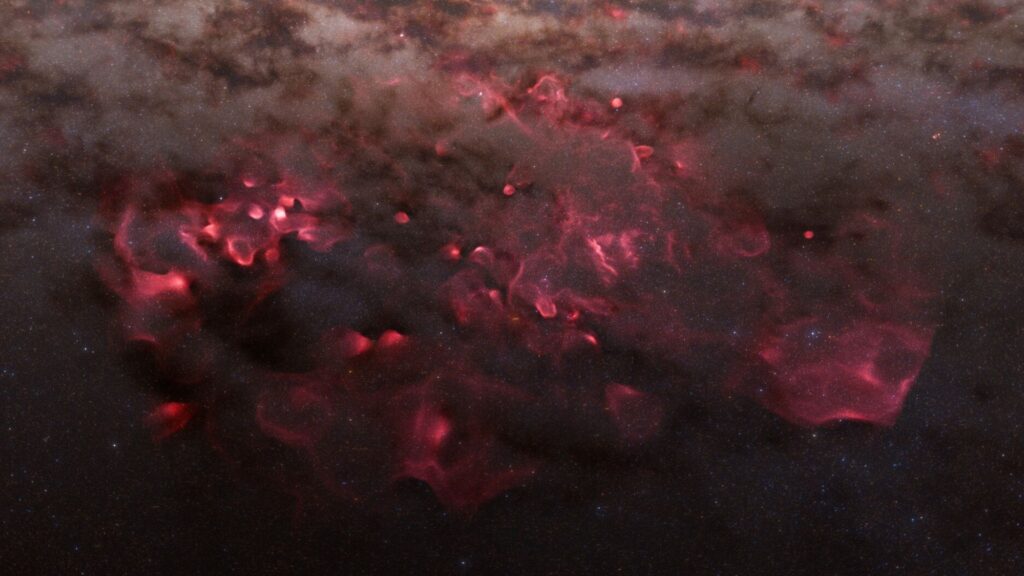
European researchers have produced the most comprehensive three-dimensional chart of the Milky Way’s stellar nurseries, mapping 44 million stars across a 4,000-light-year swath of our galaxy using data from the European Space Agency’s Gaia mission (ESA). Led by Lewis McCallum of the University of St Andrews, the project overcomes the challenge of dust obscuration by measuring “stellar extinction”—the degree to which interstellar dust blocks starlight—thus inferring the distribution of hidden gas clouds.
Innovative Extinction-Based Reconstruction
Gaia’s precise stellar positions and brightness measurements allow the team to quantify how much light is absorbed along each line of sight. By combining data from 44 million ordinary stars with 87 rare, massive O-type stars—whose ultraviolet emission ionizes surrounding hydrogen—the researchers reconstructed the three-dimensional structure of ionized gas in regions such as the Gum Nebula, North American Nebula, California Nebula and Orion-Eridanus superbubble (Phys.org). McCallum notes, “There has never been a model of the distribution of ionized gas in the local Milky Way that matches sky observations so well.”
Unveiling Galactic Architecture and Dynamics
The new map reveals that powerful stellar radiation has carved cavities in molecular clouds, with streams of gas and dust venting into interstellar voids. ESA Research Fellow Sasha Zeegers explains, “This map beautifully illustrates how massive-star radiation sculpts the interstellar medium and drives feedback processes that regulate star formation.”
Toward a Full-Galaxy Atlas
Despite requiring petascale computing to process Gaia’s third data release, the team plans to expand their chart with the mission’s fourth release in 2026, which will include more precise astrometry and photometry. “Gaia’s final data set will enable us to extend this methodology deeper into the galaxy, refining our understanding of where and how stars are born,” says Gaia Project Scientist Johannes Sahlmann.
These groundbreaking three-dimensional views provide astronomers with an unparalleled tool to study the interplay between gas, dust and radiation in shaping the Milky Way’s evolving stellar landscape, laying the groundwork for future models of galactic evolution.












